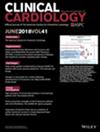Impact of Adherence to Guideline-Directed Prevention Strategies on Clinical Outcomes in Patients With Coronary Artery Disease and Diabetes Mellitus Following Acute Coronary Syndrome: A 3-Year Cohort Study
Abstract
Background
Coronary artery disease (CAD) and diabetes mellitus (DM) significantly increase the risk after acute coronary syndrome. This study evaluated adherence to guideline-directed secondary prevention strategies and demonstrated their substantial impact on reducing rehospitalization and mortality in this population.
Methods
A retrospective cohort study was conducted on 987 CAD and DM patients admitted for ACS between 2015 and 2018. Adherence to seven evidence-based secondary prevention strategies was assessed: smoking cessation, physical activity, antiplatelet therapy, statins, blood pressure control, ACEi/ARB therapy, and SGLT-2i therapy. Patients were categorized into groups based on the number of recommendations followed (0–2, 3–4, and 5+). Primary outcomes included rehospitalization and all-cause mortality over a 3-year follow-up period.
Results
At baseline, only 12.4% of patients adhered to five or more recommendations, which dramatically increased to 71.9% by the 3-year follow-up. Individual adherence to each of blood pressure control (HR = 0.81, 95% CI: 0.70–0.94), ACEi/ARB therapy (HR = 0.77, 95% CI: 0.67–0.89), and SGLT-2i therapy (HR = 0.79, 95% CI: 0.68–0.92) significantly reduced rehospitalization risk. Similarly, adherence to these therapies individually reduced mortality risk (HR = 0.78, 95% CI: 0.67–0.91; HR = 0.74, 95% CI: 0.63–0.87; and HR = 0.72, 95% CI: 0.61–0.85, respectively). Importantly, a stepwise increase in adherence was associated with a dose-dependent reduction in mortality (HR = 0.65, 95% CI: 0.52–0.81, p < 0.05).
Conclusion
This study highlights the critical role of comprehensive, multifactorial secondary prevention in its association with improved long-term outcomes in patients with CAD and DM following ACS.


 求助内容:
求助内容: 应助结果提醒方式:
应助结果提醒方式:


